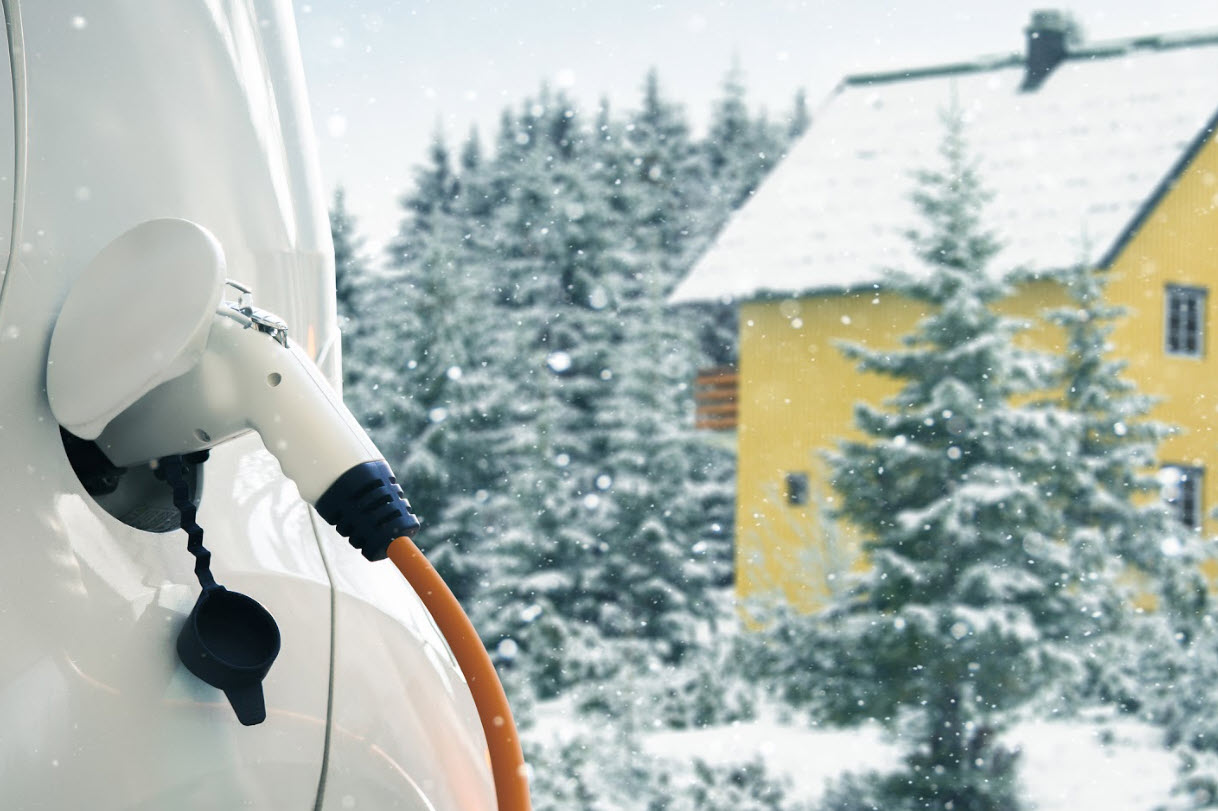Oil and vinegar. Water and electricity. Dwight Schrute and Jim Halpert.
Some things just don’t seem to mix. Winter and electric vehicles (EVs) often get lumped into that category. But what if we told you that with a few small adjustments and a little planning, Canada’s cold winters and EV technology can actually go together like brunch and bottomless mimosas, cozy sweaters and seasonal gloom, or The Office and awkward silences?
Case in point: the global leader in EV adoption is Norway. Last year, nine out of 10 new cars sold there were fully electric. This is all the more impressive when you consider southern Norway sits at the same latitude as southern Yukon and Alaska, while northern Norway lies above the Arctic Circle.

Sure, in colder climates, EV range can dip by 15 to 30 per cent. That sounds like a big drop, but as Dwight, the assistant to the regional manager, would say, “False!” It’s actually not so dissimilar to gasoline vehicles, which experience an average fuel efficiency loss of 10 to 20 per cent in the winter (and up to 33 per cent for short trips of six kilometres or less).
Winter might be the Toby Flenderson of driving seasons: cold, inconvenient, and a bit of a buzzkill. But with a little prep, your EV can handle it like Jim handles Dwight: effortlessly and with just the right amount of smug satisfaction.
If you’re a cautious EV owner (or maybe a skeptical would-be EV driver), you might be thinking, “I’m not superstitious, but I am a little stitious.” Fair enough. Being a little stitious isn’t a bad thing. To help, we found this list (paraphrased below) from EV.com to be a particularly solid resource to keep your EV running smoothly through the cold.

Stitious EV tips
The 80/20 charging rule: Aim for that 20 to 80 per cent sweet spot daily. In the winter, always keep your battery’s charge above 20 per cent. Typically, 80 per cent is the most efficient. Overcharging to 100 per cent is like Michael Scott - full of energy but not knowing when to stop. It’s unnecessary stress for the system unless you absolutely need the full range for a long winter trip or to get to the next charging station on your journey.
Park smart: If you’re like Dunder Mifflin employees and don’t have underground or indoor parking to keep your battery warm, consider a cover to protect your car from the snow and cold. Sure, Dwight will scoff and mock you through the office blinds, but you’ll be the one laughing at the end of the work day. At home, to protect your car charger from the overnight elements, consider a magnetic EV charging inlet connector cover or bag to prevent freezing.
Note: Before installing a home charger, give the Electrical Safety Authority’s guidelines a quick read - it’s worth it.
Stay plugged in: Preheating the cabin and battery while it’s still plugged in enables you to use the electricity grid instead of your battery to warm your car. This will make your battery more efficient and improve your range. You’ll have a nice warm car and a full charge before you leave the house. You can activate the pre-heat function through your EV app.
Heat efficiently: As Dwight Schrute would say if he drove an EV: “Heat is the enemy of efficiency.” And he wouldn’t be wrong. Instead of heating the entire cabin of your vehicle, consider just using your heated seats and steering wheel heater. They are vastly more efficient than cranking the main heater and they provide more targeted comfort.
Tire management: Install winter tires that are EV-specific for better efficiency and quieter rides, and consider aero-optimized wheels or covers for a small range boost. Cold weather drops tire pressure, so check your tires often. And so you don’t go full Michael Scott panic mode, keep snow chains handy for extreme weather conditions, but follow local rules before you use them.
Braking habits: Channeling your inner Angela Martin and adopting smart driving habits can make a big difference in your winter EV experience: maintain moderate speeds, get familiar with eco and snow-mode settings, and plan routes with charging stations in mind. Instructions so easy to remember, you won’t even need the office printer. Finally, adjust your regenerative braking to decelerate smoothly, which helps prevent sliding while simultaneously capturing energy to boost your battery range.
With a little planning, the right habits, and some stitious attention to detail, your EV can glide through snow and ice like Jim slipping a prank past Dwight. So charge smart, park wisely, heat efficiently, and embrace your inner Pam Beesly behind the wheel - calm, practical and quietly getting the job done, even in Canada’s coldest months.
Learn more
Earlier this year, CAA conducted its first large-scale winter EV test drives. The Canadian study mirrored similar studies conducted by CAA’s sister club in Norway. For comparison purposes, they provide a winter performance ranking of popular EVs available in Canada, along with an EV Buyer’s Guide and EV Finder. Note: Per CAA’s website, “The goal isn't to advocate for or against EV adoption…but rather to provide neutral, factual data about how these vehicles operate in cold weather.”